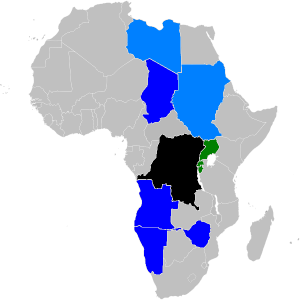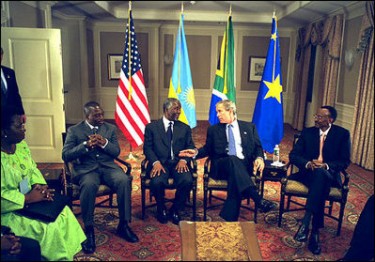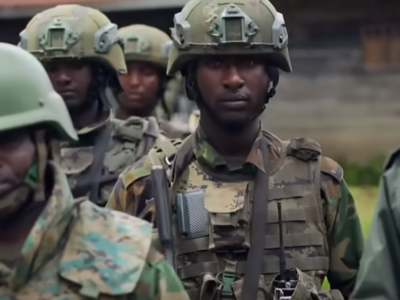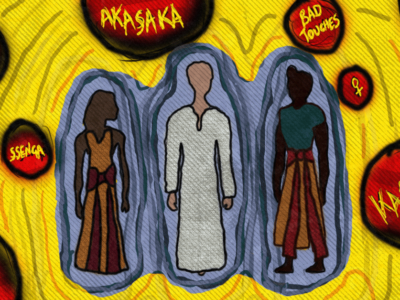The current conflict between the M23 rebels and the Congolese army cannot be completely understood without recollecting the history of the genesis of conflicts in this region of great lakes. Here is a detailed chronology of the last 50 years of confrontations in this region.
On Congo Forum, Jacques Mbokani wrote [fr]:
Depuis son accession à l’indépendance la R.D.C. a toujours été en proie à des conflits de tous ordres. … L’exposé consiste essentiellement à identifier les causes des conflits en RDC. … Les causes des conflits en R.D.C. peuvent être regroupées en deux catégories majeures. … les causes externes … et d’autre part, les causes internes.
The Congo was declared independent on June 30, 1963, and renamed Congo-Leopoldville. Power was shared between the head of state Joseph Kasa-Vubu and the Prime Minister Patrice Lumumba. On November 25, 1965, supported by governments of Belgium and the United States, General Joseph Desire Mobutu deposed President Kasa-Vubu, removing him from power and naming himself president of the Democratic Republic of Congo. He would remain in power for 30 years. The country was renamed Zaire between 1971 and 1997.
This video covers the history of the assassination of Patrice Lumumba [fr]:
http://www.youtube.com/watch?v=cOYQjegItnM
Another video tells of the coming to power of Mobutu, King of Zaïre, Conquest of Power [fr]:
http://www.youtube.com/watch?v=Tiz7egpUzUg
Important economic issues at stake
Jacques Mbokani continued [fr]:
Dans le film intitulé : « Blood Diamond » (le diamant du sang) un vieil homme soupirait en ces termes : « j’espère qu’ils ne vont pas trouver du pétrole… alors nous serons réellement en danger… ». Les propos de ce vieil homme, révèlent en réalité la question des ressources naturelles comme sources des conflits.
On the website Maps of the DRC [fr], we learn that :
Qualifié de scandale géologique, le sous-sol de la RD du Congo regorge de plusieurs minerais et d'énormes réserves énergétiques. Les ressources minières les plus connues sont celles des groupes de l'Etain, du Nobium et du Cuivre, auxquels on peut ajouter le manganèse, l'or et le diamant. Concernant les richesses énergétiques, on peut citer le pétrole off-shore de l'Atlantique et d'importants gisements du nord-est, lesquels aiguisent déjà, beaucoup d'appétits de tous les milieux mafieux aussi bien congolais qu'internationaux, au mépris des populations locales. De même, l'uranium dans le sud-est pays, ainsi que le gaz méthane du lac Kivu, font partie des ressources énergétiques dont le pays ne semble pas maitriser la gestion présente ou future. Ce manque d'autorité et de contrôle de ses propres richesses, se traduit par un trafic sans précédent à l'EST du pays, opéré par des bandes armées avec, malheureusement souvent, la complicité des congolais eux-mêmes au détriment de leur propre pays.
The causes of the internal conflicts within the DRC date from the dictatorship of Joseph-Désiré Mobutu, who remained in power until 1997:
La raison du plus fort était la meilleure, … médiocrité de la classe politique, … l’effondrement et le manque d’indépendance de l’appareil judiciaire …inexistence des services publics tant administratifs que sociaux. … Le recrutement des militaires que ce soit par le processus normal ou dans le cadre du brassage ou mixage, ce recrutement se fait sans tenir compte de la citoyenneté, de l’âge, de la moralité ou du passé judiciaire
The following video shows the hold that Mobutu had over the DRC during this period: Mobutu, King of Zaïre 2, Master of the Game [fr]:
http://www.youtube.com/watch?v=ZMElq6Pj580
Website Konexinfo [fr] traced how several countries found themselves implicated in this conflict:
La situation actuelle en RDC, dans la région du Kivu, découle de plusieurs conflits qui ont eu lieu depuis une vingtaine d’années dans la région des grands lacs africains. Ces multiples conflits sont liés les uns aux autres. De nouveaux seigneurs de la guerre prennent la relève de ceux qui accèdent au pouvoir.
Seven countries at war on Congolese soil
The Ugandan Yoweri Museveni recruited and organised an army of 6,000 men at the frontiers of Tanzania, Rwanda and Uganda and overthrew the elected president of his country, Milton Obote in 1986.
In Rwanda between 1990 and 1993 the FPR with Paul Kagamé at its head fought against the regime of the sole party of the president, Juvénal Habyarimana.
In 1994, the genocide in Rwanda, which has a common border with the DRC, forced around 2 million people to migrate to Eastern DRC.
From Zaire to the Democratic Republic of the Congo [fr] and to the current chaos, website la documentation francaise gave a detailed chronology [fr] of events in the DRC:
In 1996, in South Kivu, the Banyamulenge rebellion started, involving Congolese Tutsi of Rwandan origin (who had migrated to the region from 1959 to flee the violence in Rwanda), with the military support of Rwanda, Uganda and Burundi. With others opposing the president of Zaire, Marshall Mobutu, they regrouped as the Alliance of Democratic Forces for the Liberation of Zaire, ADFL, led by Laurent Desire Kabila.
After 30 years of power, President Mobutu left in exile before the rebels’ victory. Laurent Desire Kabila named himself president of the Democratic Republic of the Congo (DRC), the new name for Zaire. The rebels took control of capital Kinshasa on May 17, 1997.
Dismantling the camps of Rwandan refugees infiltrated by former Rwandan armed forces and extremist Hutu militia – the Interahamwe – responsible for the genocide of 1994 in Rwanda.
Kabila then broke his alliances with Rwanda, Uganda and Burundi.
In 1998, a new Tutsi rebellion, among the Banyamulenge broke out in Kivu against Kabila’s government troops, supported by his ex-allies Rwanda and Uganda. A new political-military coalition was formed – the Congolese Assembly for Democracy (RCD) – led by Ernest Wamba dia Wamba.
Seven countries at war on Congolese soil, with Congolese rebels supported by Rwanda, Uganda and Burundi….capturing Kisangani, capital of the Eastern province and the country’s third city. They would be stopped in their advance towards Kinshasa by the intervention of troops from Angola, Namibia and Zimbabwe.
This resulted in the partitioning of the country, with North and South Kivu falling under the control of the RDC and the West remaining under the control of Kabila and his allies Angola, Namibia and Zimbabwe.
Also in 1998, another rebellion, this one led by Jean-Pierre Bemba, in the province of Equator, the Movement for the Liberation of the Congo (MLC), took control of the region. With the support of Uganda, they took the city of Kindu and the mining regions of Kasai and Katanga.
On May 17, 1999, Wamba’s RCD split into two movements: RCD-Goma, led by Emile Ilunga Kalambo and supported by Rwanda, and RCD-Kisangani, which remained under Wamba’s control, and was supported by Uganda. Uganda were also still supporting Bemba’s MLC.
Kabila’s government no longer controlled the western half of the country.
The Lusaka Ceasefire Agreement (Zambia), signed in July 1999, changed nothing with respect to the massacres. The Rwandan army occupied one part of the Eastern province, North and South Kivu as well as North Katanga. The Ugandan army controlled the north parts of Equator and Eastern provinces. Despite the agreements, fighting and massacres continued. Both countries disputed control of the city of Kisangani, global hub of the diamond market, leading to the death of two hundred citizens.
In 2001, following the assassination of President Laurent Desire Kabila, his son Joseph Kabila was named head of state, on January 17.

Countries directly or indirectly involved in Congolese Conflicts by Jaro7788 – Public Domain
Since then, United Nations resolutions and peace agreements between aggressors and attempts at democracy have periodically punctuated the repeated massacres and rapes as a weapon of war. The cyclical conflicts have allowed foreign powers and companies to access the precious minerals [fr] so vital to mobile phones worldwide.
Jacques Mbokani concluded [fr]:
En résumé, la cause centrale réside dans la faillite de l’Etat congolais qu’il faut reconstruire. C’est parce que l’Etat n’existe plus que les Etats voisins pillent, violent et font ce qu’ils font. C’est parce que l’Etat n’existe plus qu’il y a la prolifération des seigneurs de guerre et la prolifération des armes légères.








5 comments
So sad story of Africa! War everywhere because of Whiteman greedy!!